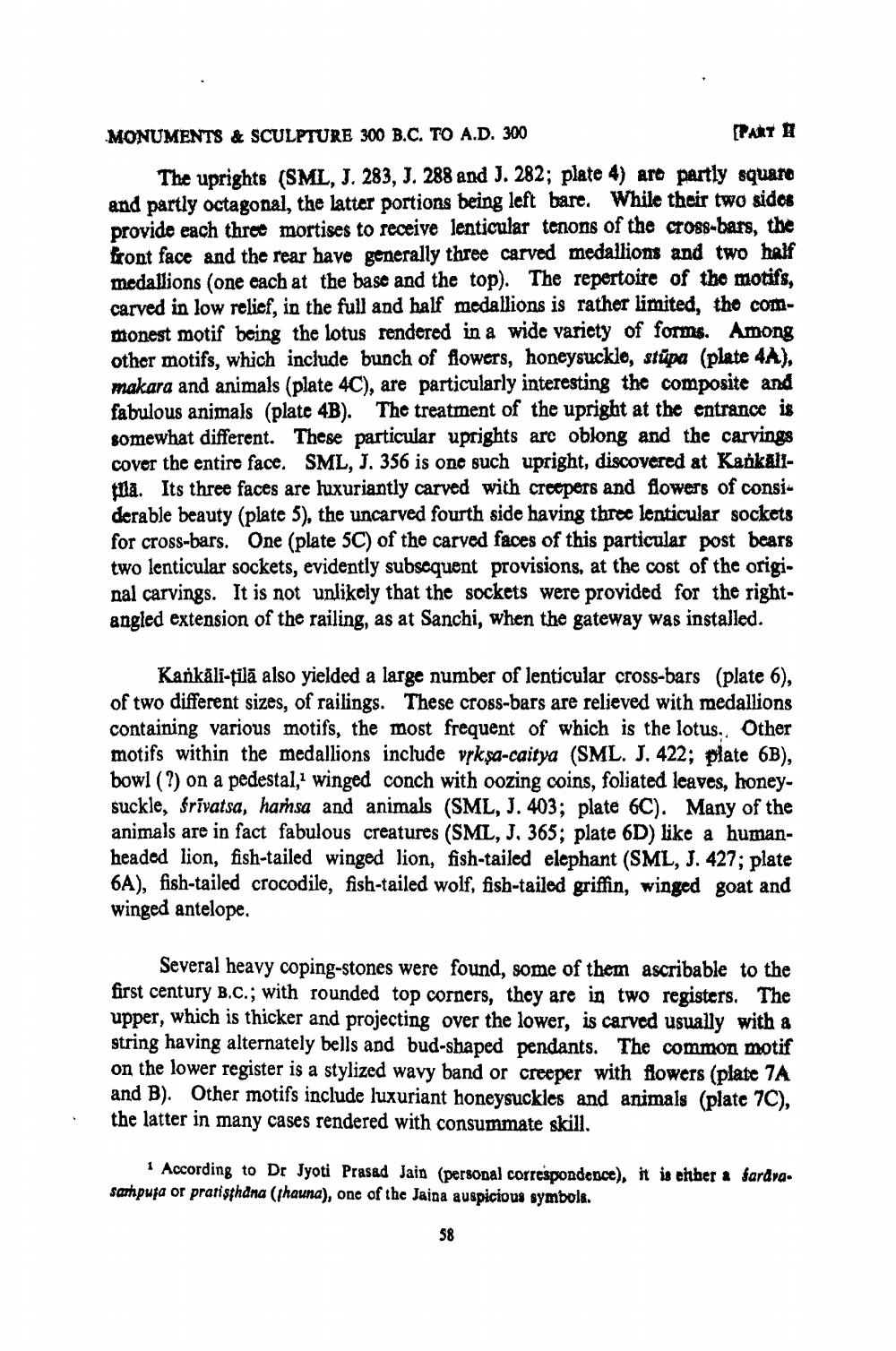________________
MONUMENTS & SCULPTURE 300 B.C. TO A.D. 300
PART I
The uprights (SML. J. 283, J. 288 and J. 282; plate 4) are partly squaro and partly octagonal, the latter portions being left bare. While their two sides provide each three mortises to receive lenticular tenons of the cross-bars, the front face and the rear have generally three carved medallions and two half medallions (one each at the base and the top). The repertoire of the motifs, carved in low relief, in the full and half medallions is rather limited, the commonest motif being the lotus rendered in a wide variety of forms. Among other motifs, which include bunch of flowers, honeysuckle, stūpa (plate 4A), makara and animals (plate 4C), are particularly interesting the composite and fabulous animals (plate 4B). The treatment of the upright at the entrance is somewhat different. These particular uprights are oblong and the carvings cover the entire face. SML, J. 356 is one such upright, discovered at Kankali
a. Its three faces are huxuriantly carved with creepers and flowers of considerable beauty (plate 5), the uncarved fourth side having three lenticular sockets for cross-bars. One (plate 5C) of the carved faces of this particular post bears two lenticular sockets, evidently subsequent provisions, at the cost of the original carvings. It is not unlikely that the sockets were provided for the rightangled extension of the railing, as at Sanchi, when the gateway was installed.
Kankāli-tilā also yielded a large number of lenticular cross-bars (plate 6), of two different sizes, of railings. These cross-bars are relieved with medallions containing various motifs, the most frequent of which is the lotus. Other motifs within the medallions include vrksa-caitya (SML. J. 422; plate 6B), bowl (?) on a pedestal, winged conch with oozing coins, foliated leaves, honeysuckle, frivatsa, harsa and animals (SML, J. 403; plate 6C). Many of the animals are in fact fabulous creatures (SML, J. 365; plate 6D) like a humanheaded lion, fish-tailed winged lion, fish-tailed elephant (SML, J. 427; plate 6A), fish-tailed crocodile, fish-tailed wolf, fish-tailed griffin, winged goat and winged antelope.
Several heavy coping-stones were found, some of them ascribable to the first century B.C.; with rounded top corners, they are in two registers. The upper, which is thicker and projecting over the lower, is carved usually with a string having alternately bells and bud-shaped pendants. The common motif on the lower register is a stylized wavy band or creeper with flowers (plate 7A and B). Other motifs include luxuriant honeysuckles and animals (plate 7C), the latter in many cases rendered with consummate skill.
1 According to Dr Jyoti Prasad Jain (personal correspondence), it is enher & fardra. sarpuja or pratisthana (fhauna), one of the Jaina auspicious symbols.
58




